Gabbeh (sometimes written “gabba”) carpets are classic Persian rugs notable for their geometric designs and narrative/storytelling components. The Farsi equivalent for “Gabbeh” (Persia’s official language) is “raw, natural, or uncut.”
The Gabbeh carpet is a traditional carpet from Iran’s southern regions. Its origins, like those of practically other traditional Asian carpets, may be traced back to the nomadic tribes that lived in the area. Gabbeh rugs, unlike other Oriental carpets, feature a basic style that has only lately been discovered by interior design lovers. We’ll talk about these amazing luxury rugs here in this article.
History of A Gabbeh Rug
Gabbeh (typically pronounced gah-bay) is the name of a kind of rug. A Gabbeh rug features a basic design that is hand knotted with fine wool that has been organically colored and finished with a high pile. Furthermore, the term “Gabbeh” literally translates to “rough,” which accurately describes this kind of Persian rug.
Where are Gabbeh rugs made? This question might arise for carpet enthusiasts. Well, these traditional carpets were originally created by women from tribes in Persia’s southwest. The original designs were relatively simple, with just a few artistic motifs, generally a geometric combination of creatures representing animals, humans, and trees roughly knotted with vividly colored wool. Gabbeh carpets are an old type of rug, with the first documentation of one dating back to the fifteenth century A.D.
If you’re interested in gifting your friends with an Iranian souvenir that reflects the country’s rich culture and history, a Gabbeh carpet would be a great choice as it is an old and traditional type of carpet known for its beauty and uniqueness.
Gabbeh Rug’s Rise to Popularity
The first instance of vegetable-dyed Gabbeh carpets was made in the mid-1980s. It was thus late because Gabbehs were deemed to be too coarse to trade.
However, their aesthetic worth has just been recognized. Gabbeh’s natural fuzzy texture, thickness, style, and low price have rapidly made them popular in houses with a contemporary or modern interior design. Gabbehs are incredibly durable and often range in size from small to medium.
Characteristics of Gabbeh Rugs
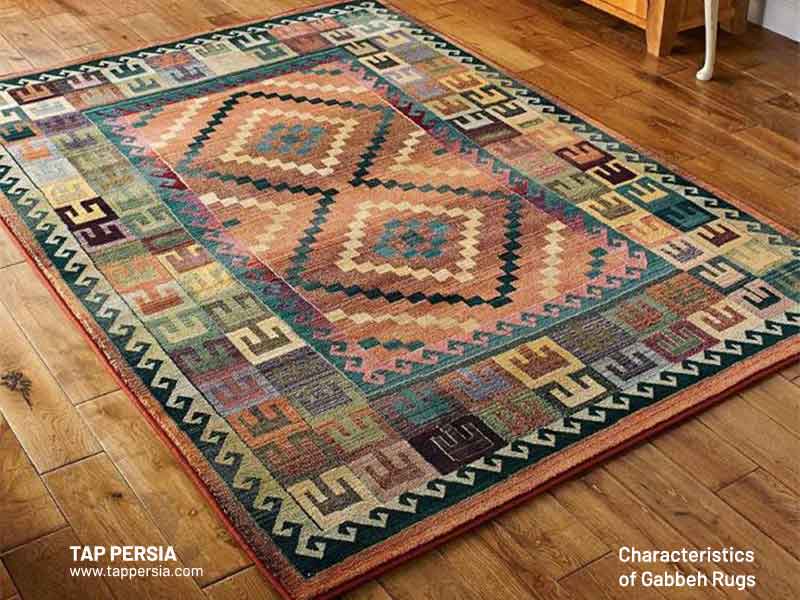
Gabbeh rugs are often thicker than other Persian carpets, measuring up to one inch in height. They are composed of natural, handspun wool yarn that has been dyed using plant dyes. Gabbeh rugs may be identified by its coarse weaving, different geometric zones of color, and artwork illustrating stories and locations.
Types of Gabbeh Rugs
Gabbeh rugs are classified into various sub-types. These are some examples:
Basic
Basic Gabbeh carpets have a straightforward pattern and brighter colors.
Kashkoli
Short, soft piles that have a wonderful sheen and a tight weave with more knots per square inch.
Amalehbaft
A Gabbeh rug with an even simpler design than Basic Gabbeh Rugs with a tighter weave.
Baluch
Type of Flat-woven Gabbeh carpets that frequently have tribal patterns.
Luribaft
The elaborate and complicated patterns of Luribaft carpets are well renowned.
Sumak
A Type of Flat-woven Gabbeh rugs that are distinguished by their depth of color and level of intricacy.
Construction of Gabbeh Rugs
Handwoven wool pile carpets from Iran’s Zagros mountain area are known as Gabbeh. The patterns frequently include rectangular shapes that encircle an animal picture.
These carpets can often be more reasonably priced since they are more readily produced than other Persian rug designs. These carpets may be made more rapidly because of the simplicity of the patterns and the sparse use of knots.
Remember that imitations and knockoffs of Gabbeh carpets have proliferated due to their immense popularity. These carpets can wear out rapidly, are frequently of lower quality, are less soft, and employ chemical dyes.
What Are the Advantages of Owning a Gabbeh Carpet?
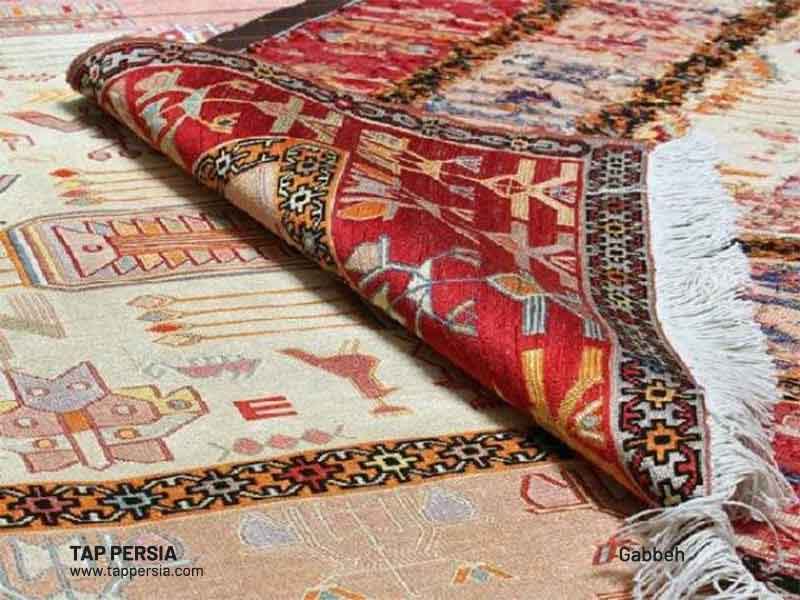
The fact that a Gabbeh carpet can be used as both a beautiful and practical component of the home is one of its most evident benefits. Gabbeh carpets are distinctive among Oriental carpets because of their strength and longevity.
The end product is a thicker and cozier carpet because coarser wool fibers than those used in Persian carpets were employed. A Gabbeh carpet is very warm and can be up to 2.5 cm thick. For those who live in multi-story homes, having a thick carpet helps to reduce sounds and is therefore quite helpful.
Bright colors are used to create traditional patterns, which frequently feature geometric designs or stripes in various tones. On the other hand, more current models are typically designed with simple designs or in muted hues.
Why decorate your home with a Gabbeh carpet?
For people who wish to equip their houses in a modern, minimalistic manner but who also want to add some color and warmth, Gabbeh rugs are the ideal option. The two types of striped Gabbeh carpets available are those with geometric patterns running over the whole carpet’s surface and those with solid-colored versions with patterns scattered around the borders.
This kind of carpet may be used in a variety of interior design projects due to its adaptability. It looks as at home in a rustic or eclectic-styled room as it does in, for instance, an industrial-styled home.
The Persian Gabbeh carpet is ideal for any space that requires comfort and straightforward yet striking designs. A rug of this type may be easily added to hallways, guest rooms, and the master bedroom.
A Persian Gabbeh carpet is also ideal for brightening a child’s room and providing them with a cozy and warm surface to play on. Gabbeh carpets may be used to decorate a luxurious living room, possibly by putting one in front of the fireplace. The rug will increase the home’s feeling of coziness during the winter, while the wool’s insulating properties will keep things cool during the summer.
What is Gabbeh’s style?
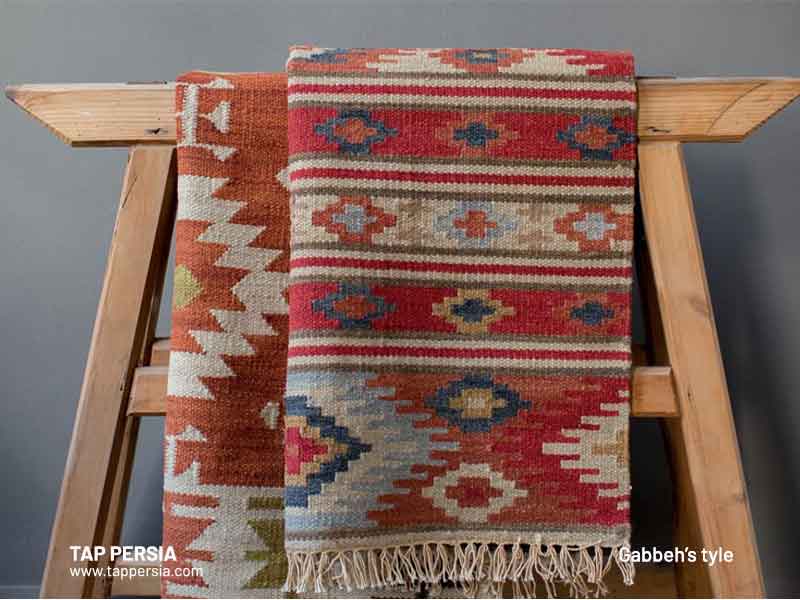
This carpet is coarse and undeveloped. Gabbeh designs are of a very simple nature, with few ornamental, primarily rectangular shapes that primarily resemble animals. Bright hues like yellow and red are frequently employed in Gabbehs.
What is a Gabbeh rug?
A specific type of Persian carpet known as Gabbeh is known for its straightforward pattern, hand-knotted use of pure wool colored organically, and deep pile. Women from the Qashqai tribes of southwest Persia created Gabbeh carpets at first.
Are Gabbeh Rugs Good Quality?
The greatest Persian Gabbehs include superbly soft wool, pleasing hues, and an attractive design or artwork. Of course, the taste is individual, but the bulk of people choose to purchase remarkable and gorgeous rugs.
What is a Gabbeh rug made of?
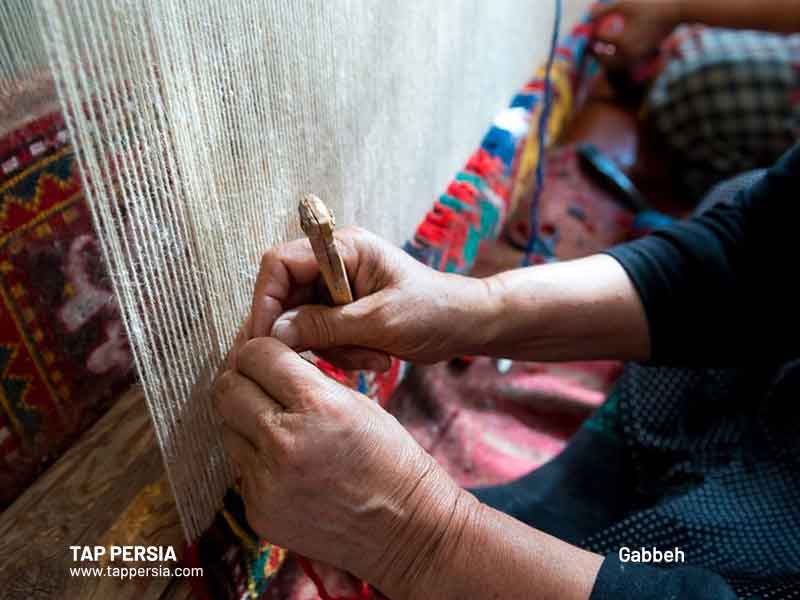
Hand-spun wool serves as the base material, and it is colored using natural pigments derived from plants and minerals.
Where are kilim rugs from?
Turkish Anatolia is where kilim first appeared. Anatolia is frequently regarded as one of the major historical civilizational crossroads because of its location between the Black and Mediterranean oceans. Many of the shapes and motifs used in Turkish kilim today still have historical roots.
Where are Chobi rugs made?
Handmade Chobi Persian-style carpets are produced in Afghanistan near the Pakistani border.
Why are kilim rugs so expensive?
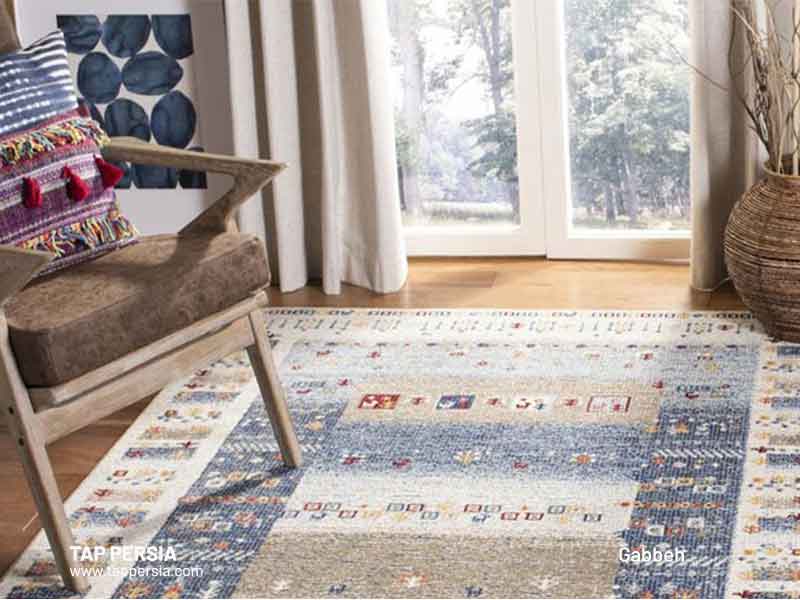
Kilim rugs cost more than other types of rugs because they take a lot longer to make and typically need a lot of labor from the weaver.
Can I wash my kilim rug in the washing machine?
No, you cannot. A kilim rug should never be cleaned in a washing machine or dryer. A kilim rug should be cleaned and washed outside with cold water on gravel or grass.
How do you know if a rug is Persian?
There are no sewn-on fringes on a true Oriental or Persian carpet. Persian rugs are known for their extraordinarily distinctive patterns, rich color combinations, and unusually thick pile (up to 160 knots per square inch).
Conclusion
Persian carpets are frequently used to give rooms a cozy and opulent appearance. Persian carpets of the Gabbeh variety, which are the most well-known Nomadic Persian rugs in the world, are becoming more and more popular.
The Rug dealers and merchants once regarded them as “artistic and innovative,” but interest in them has increased over the past 30 years as people have learned to appreciate their understated beauty and charm.
If you want more information about these beautiful carpets and traveling to Iran in general, make sure to check out www.Tappersia.com. You can contact the TAP Persia team via online chat or WhatsApp.

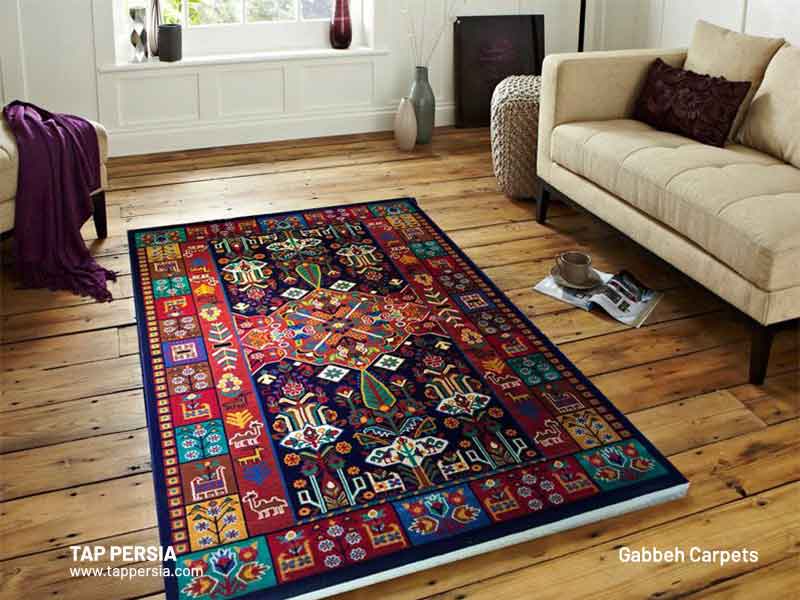


Comment (0)